Switch to the mobile version of this page.
Vermont's Independent Voice
- News
- Arts+Culture
- Home+Design
- Food
- Cannabis
- Music
- On Screen
- Events
- Jobs
- Obituaries
- Classifieds
- Personals
Browse News
Departments
Browse Arts + Culture
View All
local resources
Browse Food + Drink
View All
Browse Cannabis
View All
-
Business

Cannabis Company Could Lose License for Using…
-
Culture

'Cannasations' Podcaster Kris Brown Aims to 'Humanize'…
-
True 802

A Burlington Cannabis Shop Plans to Host…
-
Business

Judge Tosses Burlington Cannabiz Owner's Lawsuit
-
Health + Fitness

Vermont's Cannabis Nurse Hotline Answers Health Questions…
Browse Music
Browse On Screen
Browse Events
View All
Quick Links
Browse Classifieds
Browse Personals
-

If you're looking for "I Spys," dating or LTRs, this is your scene.
View Profiles
Special Reports
Pubs+More
Vermont Women Pilots Are Soaring
Published August 9, 2017 at 10:00 a.m. | Updated October 1, 2020 at 6:36 p.m.
Women make better pilots than men, or so contends Doug Smith. He ought to know. Smith, 68, is cofounder of the Vermont Flight Academy and program director of Vermont Technical College's professional pilot technology program in Williston. He's been flying since he was 7 years old and spent decades as an international airline pilot, flight instructor and examiner. In his view, female students tend to be more cautious, methodical, detail oriented and able to multitask than males.
Be that as it may, aviation remains a male-dominated profession and hobby; fewer than 6 percent of airline and commercial pilots nationally are female, according to the Federal Aviation Administration.
Women in aviation may be few, but they figure prominently at all levels of the flying community in Vermont. In Vermont Technical College's professional pilot technology program, the only fulltime professor, Robin Guillian, is a woman, as is one in four of her flight instructors. Of the incoming freshman class, five of the 22 are female, which is well above the national average.
Wanting to hear their stories, we profiled eight local female pilots involved in a range of different forms of aviation: academic, commercial, military and general.
While none of the women echoed Smith's bold claim, many agreed with his assessment. Some said they had to work twice as hard as their male counterparts in flight school just to be treated as equals. Others suggested that, lacking testosterone and a male ego, women are typically more levelheaded in the air, especially when the unexpected occurs.
Among the gender stereotypes women tend to encounter in aviation is the notion that professional flying isn't a good fit for potential moms. Yet almost all the pilots interviewed for this story are mothers or plan to be. At least one flew professionally through two pregnancies, at times nursing her infant in the cockpit of a commercial airliner before takeoff. And, unlike in many other professions, male and female commercial pilots enjoy equal pay.
Collectively, these eight women have flown to every continent but Antarctica — and one, Kathy Daily, has landed at the North Pole twice. They've piloted an array of aircraft, from a glider to an F-16, a World War I-era Sopwith Camel to a Boeing 767.
Would Smith's assessment of the female advantage in the cockpit withstand scientific scrutiny? Hard to say. Regardless, Vermont women are soaring in aviation, so we met some of them and went aboard for the ride.
Shirley Chevalier
Town: Colchester
Profession: Pilot/photographer, FliRite Aviation custom aerial photography
Favorite Aircraft: 1959 American Champion
Shirley Chevalier dipped a wing on her '59 American Champion and took the single-engine plane into a sharp, banking dive toward a grassy airstrip on Lake Champlain's Savage Island. As the tiny two-seater approached the private isle, halfway between New York and Vermont, it shuddered in a sudden crosswind. Chevalier pulled up on the stick and aborted the first landing attempt, then the second.
"Well, that was kind of squirrelly," Chevalier announced matter-of-factly, as we regained altitude and headed back toward Burlington International Airport. That's where Chevalier's business, FliRite Aviation, is headquartered. You don't log 40 safe years as a professional pilot without having a healthy respect for sketchy wind conditions.
At 75, after four decades as a professional pilot and aerial photographer, Chevalier exudes a childlike joy of flying. But she wasn't always happy in the air. In 1978, a commercial pilot invited Chevalier, who worked for an airport car-rental agency, on a short "freight hop" to Portland, Maine.
"So, off we go into the wild blue yonder, and he really tried to impress me," Chevalier recalled. "And he did, because when we got to about 3,000 feet, he shut the engine off. I've never been so frightened in my life."
Upon landing, Chevalier slammed the plane door and announced, "I will never get in one of those damn things again as long as I live!"
Chevalier eventually overcame her fear of flying. She moved from renting cars to working as an airport tour guide to earning her pilot's license. In 1984, she bought her current plane for $7,000 and launched FliRite Aviation, her aerial photography business.
Chevalier has since outfitted the wings with vortex generators that lower the plane's stall speed, allowing her to fly low and slow enough to capture hard-to-get images. Fully reconditioned, the plane contains more than $20,000 worth of digital tools.
Today, virtually everyone at the airport recognizes Chevalier and her immaculate, red-and-white aircraft adorned with hearts. As she explained, "I just thought, If it's going to be a lady's airplane, it should look like a lady's airplane."
On her final approach to BTV, Chevalier radioed the tower that she planned to do a fly-by over the Colchester Costco to photograph new construction for a client. As she circled overhead, Chevalier opened the window, poked her camera outside and fired off a dozen shots, all the while steering the plane with the stick between her knees.
After she touched down on the runway, the air traffic controller, in a rare burst of radio banter, remarked, "Champ 99 Echo, after two years in Burlington, I finally know where Costco is now."
Chevalier smiled as she taxied back to her hangar and said, "Those guys just think I'm the cat's meow!"
Hope Riehle
Town: South Burlington
Profession: Retired
Favorite aircraft: Cessna 185. "It's a workhorse."
"Two area homemakers will take off on their first leg of a 2,573-mile transcontinental air race from Fresno, Calif., to Atlantic City, N.J."
That quote appears in a yellowed newspaper clipping from July 4, 1966. Hope Riehle spread it out on a coffee table in her townhouse, along with a handful of old photos. The news story reported on Riehle's participation in the 18th annual All-Woman Transcontinental Air Race, aka the Powder Puff Derby.
Despite the race's cutesy moniker, the women aviators who flew their single-engine planes across the country in 10 days, without cellphones or GPS systems, were no shrinking violets.
Like many women of her generation, Riehle, now 84, took up flying in her twenties because her husband at the time, Ted Riehle — the former South Burlington lawmaker who was instrumental in Vermont's billboard ban — was into it.
"He was the pilot and had a plane and wanted me to fly. So I did the dutiful wife thing," the Boston native recalled. "It took me a while to enjoy it."
By 29, she'd earned her pilot's license. Riehle's most common cockpit companion was longtime friend and fellow pilot Dawn Hazelett. The latter joined Riehle as navigator when the pair began competing in air races — again, at Ted's urging. Riehle flew the plane, and Hazelett chose their routes, departure times and stops based on weather conditions.
"Dawn was just a great person to fly with. We were really compatible and had a lot of laughs," Riehle recalled.
Riehle and Hazelett's first competition was the 1965 New England Air Race, which left from Burlington. The two women convinced Burlington carrier Northern Airways to sponsor them. They dressed alike for their inaugural race, which involved logging flight times, fuel consumption and arrivals at predetermined landmarks and intervals. After the win, Riehle said, "we sort of got the bug."
Riehle and Hazelett didn't fare as well in the '66 Powder Puff Derby, finishing in the middle of 50-odd competitors. But they went on to compete again before finishing dead last in a New Jersey-to-Nassau air race. Riehle attributed their poor showing to fierce headwinds. "We retired after that one," she said.
From then on, Riehle flew strictly for pleasure, ferrying family and friends to Lake Champlain's Savage Island, which the Riehle family owns; or making vacation trips to Florida and Haiti.
"Dawn and I were the only [female] pilots around here who flew in those years," Riehle said. "People still say to me today, 'Oh, my God! You flew a plane?' Yeah. 'Wasn't that scary?' No."
Actually, Riehle did recount one white-knuckle moment during takeoff from BTV in 1966. Several days earlier, she and Hazelett had traveled to Wichita, Kan., to pick up a new Cessna 185 that Ted had just purchased. The seller neglected to inform Riehle about a knob in the cockpit that adjusted the rudder trim. Whenever she took off, the plane pulled left, and she had trouble reaching the right rudder pedal to compensate.
When Riehle arrived back at BTV, Ted suggested his wife fly the first leg of their planned trip to Florida that day. As the plane lifted off, Riehle recalled, it immediately veered hard left — straight toward the Burlington control tower.
"Ted was saying, 'Give it rudder! Give it rudder!'" Riehle remembered. "I said, 'You give it rudder! Your legs are longer!'"
Riehle hasn't kept her license current and doesn't own a plane anymore, having sold her last one after she and Ted divorced. "It was an expensive toy," she noted, "and something had to go."
Hazelett, Riehle's longtime copilot, died on October 14, 2015, a week shy of her 93rd birthday. Riehle still enjoys going flying with friends and family and occasionally takes the wheel to, as she put it, "bore holes in the sky."
Jennifer Davis
Town: Johnson
Profession: Aviation operations manager, Vermont Agency of Transportation
Favorite aircraft: Pawnee glider tow plane. "I love seaplanes. You get to fly and be on the water at the same time."
Despite Jennifer Davis' managerial job, she's not shy about getting her hands dirty. Or wading waist-deep into Lake Champlain to launch a floatplane, as she did recently on a rocky beach in Grand Isle.
Davis and a group of fellow pilots were launching Doug Smith's Piper PA-12 Super Cruiser. The three-passenger floatplane was being readied for Aero Camp, a summer program, held last week, that teaches 12- to 17-year-olds how to fly various aircraft, including floatplanes and gliders.
Davis' interest in getting young people, especially girls, up in the air reflects her own youthful start in aviation. The 32-year-old Johnson native learned to fly at 14 at the Morrisville-Stowe State Airport. There, she bartered for glider lessons by helping out around the airfield, hooking up gliders, tending towlines and doing other assorted chores.
After high school, Davis attended Dowling College on Long Island to learn to fly engine planes, then earned a master's degree in aviation management. She prefers flying to a desk job, she said, but wanted other options because "as a pilot, you always have to think what's going to happen if someday you don't pass the medical or ... you just don't want that lifestyle anymore."
Back in Vermont, Davis landed a job with Heritage Aviation, flying twin-engine turboprops out of Burlington. When the charter company hit financial turbulence in 2012 and laid off all its pilots, Davis took a position at Cape Air in Hyannis, Mass. She said that piloting Cessna 402s around northern New England for nearly three years gave her invaluable experience flying in bad weather. Soon she was splitting her time between summers on the Cape and winters in the Caribbean. "It was terrible," she joked.
As a female in a male-dominated field, Davis said, she hasn't endured much gender discrimination on the job, but it does happen occasionally.
"As a professional pilot, there were certainly days when I'd get the comment 'Are you the pilot? Isn't there anyone else?'" she recalled. Ironically, those comments most often came from middle-aged women.
"I've been overlooked for positions before because they didn't want a female pilot," Davis added. Typically, those jobs entailed flying the owner of a company around in his private plane. "You hear through the grapevine that they didn't want a girl in their club."
On the positive side, Davis said she's met a lot of interesting people through aviation, including her fiancé, who's also a professional pilot.
In the air, Davis noted, she's been incredibly fortunate, having experienced no major mishaps aside from a blown piston on a glider tow plane during takeoff.
"It doesn't seem scary when it's happening," she said, "because you're constantly training for emergencies."
Davis has been in her current job for a year and a half, with her flying mostly limited to gliders, seaplanes and instructional sessions. These days, she said, she most enjoys taking someone up in a floatplane for the first time and experiencing their sense of awe.
"If you can be by the lake and see the Green Mountains in the background and fly airplanes all day — and get paid for it," she said, "that's not so bad."
Beth Schiller
Town: Essex, N.Y.
Profession: Nurse practitioner and executive director, Champlain Medical Urgent Care, South Burlington
Favorite aircraft: Cessna 170. "It's like a sports car."
Beth Schiller can lay claim to the most scenic commute in Vermont — and possibly the shortest. Though she lives in Essex, N.Y., an hour-plus drive and ferry ride from her workplace in South Burlington, most mornings Schiller makes the trip by air in just nine minutes. As she put it, "If I can see Burlington, I can fly there."
Schiller, 53, is a nurse practitioner at Champlain Medical Urgent Care, which is owned by her and her husband, Josh Schwartzberg. An osteopathic physician and pilot, Schwartzberg is also a senior aviation examiner for the Federal Aviation Administration, ensuring that pilots are medically fit to fly.
Schiller became a pilot in 1999 after Schwartzberg flew her to Québec on a cold February day. On the return flight, Schiller recalled, she wondered what she'd do if her husband — 18 years her senior — suddenly suffered a heart attack.
"I figured I'd better learn how to fly," she said. "I began that April and was finished by August."
Today, the couple typically commutes to work by plane three to five days a week, year round, weather permitting. (They don't fly in icy conditions or high winds.) They take off in one of their two planes from a grass strip in Essex and fly to BTV, where they keep a car for the short drive to work. Because their house is at the same altitude as Burlington, Schiller said, it's easy to navigate without instruments, even with low clouds. Sometimes, she'll just follow Route 7 south to Ferry Road in Charlotte and then hop across the lake.
Schiller doesn't have many scary midflight experiences to report. Some winters, her pitot tube, which calculates the plane's airspeed, has frozen up. Otherwise, she said, "no big horror stories."
Still, rural aviation presents inherent hazards. Two weeks ago, Schiller was about to land at home when she spotted her neighbor's sheep dog sprawled in the middle of the airstrip.
"I texted [my neighbor], 'Dog on runway. Want to land.' And then 'Landed. Dog coming toward airplane.'" Fortunately for pilot and pooch, the incident ended uneventfully.
Schiller's most poignant flight story involves not her flying but her caregiving. In June 2012, she had a 17-year-old patient, Grace Emery, with end-stage cancer. One day, she offered to take the girl flying and asked where she wanted to go.
"Then she told me her bucket list," Schiller recalled. Emery wanted to meet Buddy Valastro from the TV show "Cake Boss," then see a Broadway play and take a carriage ride in Central Park.
Schiller reached out to Don Ingham, director of flight operations for PC Construction in South Burlington, which donated a jet and pilots to fly Schiller, Emery and her family to New York City to fulfill her bucket list.
"All three we did in 24 hours," Schiller noted. "She died 24 hours later. It was amazing."
Jennifer Hoy
Town: Essex Junction
Profession: Flight instructor at Vermont Technical College and former airline pilot
Favorite aircraft: Boeing 757. "I love that grossly overpowered aircraft. It's such a rocket ship!"
Growing up, Jennifer Hoy never considered a career as a commercial airline pilot — though not because of her gender. The Essex Junction native, now 47, said she just never knew any pilots.
After Hoy graduated from the University of Vermont with a degree in English and economics, a family friend suggested she enlist in the Vermont Air National Guard. Having just seen the film Top Gun, Hoy was intrigued by the idea of flying fighter jets but ultimately didn't qualify — she lacked perfect 20/20 vision. Still interested in flying, she decided to earn her private pilot's license at the Franklin County State Airport in Highgate.
In the 1990s, Hoy attended FlightSafety Academy in Vero Beach, Fla., where she flew six days a week, earning every type of "rating," or equipment-specific FAA certification, that she could. Soon she was working for the academy as an instructor and teaching aerobatics.
Then Hoy got a call from a friend who flew for Charter Fleet International, a now-defunct charter company based in West Palm Beach, Fla. It wasn't the higher pay that attracted her, she recalled, so much as the opportunity to travel.
From 1998 until 2006, Hoy worked as a pilot for Atlantic Coast Airlines, a regional carrier that's since gone under. As she joked, "You're never a true airline pilot until you've been furloughed or your company goes bankrupt."
Based at Washington Dulles International Airport, Hoy flew a Jetstream 41, a 29-seat turboprop "puddle jumper" that she called "an absolute blast to fly, but not super-comfortable for the passengers in the back."
After that company went bankrupt and became Independence Air, Hoy "moved to the right seat," i.e., became a first officer, on an Airbus A319. That job took her all over the world. Hoy was pregnant with her first child while flying to and from Kuwait and Qatar.
"I was walking around there during Ramadan, and I was pregnant and ... not wearing a burqa," she recalled. "You get a lot of interesting looks from people."
Flying in Kuwait in the mid-2000s posed a unique aviation challenge, Hoy said. Because the flight path comes in over Iraq, she had to stay above 18,000 feet to avoid getting hit by rocket-propelled grenades. The final approach required a steady downward spiral from 18,000 feet to the airport.
In flight school, Hoy said, whenever students got their written tests back, all her male colleagues wanted to know her grade. She had to perform at a higher level just to gain their respect, she recalled.
Even after earning the captain's chair, Hoy occasionally caught flack from male pilots.
"I'd be flying along and make a radio call, and someone would pipe in and say, 'Oh, another empty kitchen,'" she recalled. "Some girls are deterred by that. I don't let it bother me."
Despite such challenges, Hoy said that being a pilot is an amazing career for young women or men. Though she hopes to get hired soon by a regional or major carrier, she pointed out that aviation offers other ways to fly for a living — for the FAA, cargo carriers, pipeline companies, law enforcement or utility companies.
"There's nothing better than flying," Hoy concluded. "It's great looking down on the rat race below and knowing I'm not in it."
Kathy "Rocky" Daily
Town: Hinesburg
Profession: Aerobatics instructor, Vermont Flight Academy
Favorite aircraft: Three-engine Douglas DC-3. "There is no other airplane like it, or probably ever will be again."
If a filmmaker sought a female Indiana Jones-like character to inspire an action-adventure film, Kathy Daily would fit the bill. In 40-plus years, the Williston native has flown more than 75 different aircraft to places even the most adventurous tourists never see.
Daily's aviation adventures began at 22. Shortly after graduating from flight school, she landed a job as a Jill-of-all-trades at the airport on Martha's Vineyard. One day, while she was practicing aggressive stalls and recoveries, her plane went into an unrecoverable flat spin, fell 2,500 feet and crashed in the ocean.
Daily and her passenger survived by swimming to a buoy, where a passing vessel rescued them. The accident busted up her face, knocked out teeth and left her with internal injuries.
In 1982 and '84, under contract to the U.S. Navy, Daily flew New Zealand paratroopers to the North Pole to deploy beacons for tracking Russian submarines beneath the ice.
Next, she spent five summers flying in Coors Light-sponsored airshows. Her plane: the BD-5, the world's smallest jet and, at the time, one of only five in the world. Daily and two fellow pilots flew at 300 miles per hour within three feet of each other while performing precision maneuvers. Though she never looked at her wingman, she said, she could feel his presence midflight when his plane sidled up beside hers.
"That was a wonderful part of my flying life," Daily recalled. "The camaraderie you have with people when you do that kind of flying, there's nothing else like it."
For four years in the late '80s and early '90s, Daily worked as a ferry pilot, flying other people's planes from one destination to another. It's inherently hazardous work, involving long flights carrying extra fuel tanks to minimize stops. Usually, the pilots have no history with the aircraft or knowledge of its maintenance record.
Once, while ferrying a plane to Africa, Daily flew through a severe thunderstorm and lost control of the aircraft for several minutes. The plane was so battered it had to be scrapped when she landed.
On another occasion, while Daily and a fellow pilot were ferrying two planes across Africa, her companion suffered a fuel-feed problem and feared he'd run out. Despite their repeated distress calls, the Nigerians refused to grant them permission to land. They did anyway.
"It was that or crash-land in the ocean," Daily recalled. They were placed under house arrest in Lagos until a bribe rectified the problem. "I bet that cost us $15,000 or $20,000 to get out," she said.
On a different overnight ferry flight, Daily was piloting a Cessna 210 over Mali when the plane caught fire with 300 gallons of fuel on board. She had improperly wired the satellite navigational system, which shorted out. With no electrical power, she had to repair the wires by hand in midair, using only a screwdriver and flashlight. Daily finally restored power, but, without navigational aids, she had to use dead reckoning to reach her destination of Abidjan, Ivory Coast. "It was a seriously unpleasant couple of hours," she said.
Now 65, Daily is finally slowing down — in her own way. She doesn't own planes anymore; they got too expensive with her son in college. Instead, she's taken up racing vintage motorcycles at the New Hampshire Motor Speedway. Though Daily still loves flying, "Motorcycles are at least as much fun," she said, "for a lot less money."
Robin Guillian
Town: Williston
Profession: Assistant professor and flight instructor, Vermont Technical College professional pilot technology program
Favorite aircraft: Douglas DC-3. "It's just a beast. It's huge! Really old and cool."
Robin Guillian might not have taken up flying if she'd been a better artist. After getting a D in a basic drawing class in college, she abandoned her first career choice: interior design. "I realized this might not be a lucrative line of work for me," she joked.
Ultimately, her course correction worked out. Guillian spent much of her youth earning type ratings on various aircraft and chasing professional flying opportunities around the world.
Today, the 51-year-old is an assistant professor in Vermont Tech's professional pilot technology program, where she'll teach eight classes this fall. During the summers, Guillian is an Aero Camp flight instructor. She also spends time at her family's second home in Homer, Alaska, flying floatplanes with her husband and kids.
It was a single trip in a trainer in 1985 that piqued Guillian's interest in flying. While attending community college in Washington, she took an introductory flight class at Seattle's Boeing Field (King County International Airport). Intrigued by the skills flying required — hand-eye coordination, multitasking, thinking on the fly — she shifted gears from window trims to airplane trims.
"My dad was not in," she noted. Why not? As she recalled him remarking, "'Because girls don't fly airplanes.'"
Guillian's mother had been a flight attendant for Eastern Airlines in the 1950s but was forced to quit when she got married; in those years, stewardesses had to be single. Even years later, when women finally moved into the cockpit, some airlines fired them if they got pregnant.
But Guillian was 22 and determined. She got her private pilot's license in 1986, then drove to Florida to attend Embry-Riddle Aeronautical University in Daytona Beach for commercial flight training. Being one of only two female aviation students wasn't easy, she recalled, as sexism was still rampant in those days.
"The leadership had a hard time with it," she said. "They just didn't know what to do with us."
Guillian graduated in the late '80s, just as an airline industry slump was grounding many career opportunities. Undeterred, she went overseas to work as a civilian flight instructor at the U.S. Naval Station in Rota, Spain.
Guillian loved Europe but heard that pilots could accumulate multiengine airtime in Africa. Having flown twin turboprops for sugar companies in Florida, she bought a one-way ticket to Kenya. She quickly realized the opportunities weren't as advertised: The Kenyans wanted pilots to smuggle khat, a lucrative drug crop.
"You could do a lot of flying if you were willing to do a lot of risky flying," she said. "I was not."
In the 1990s, Guillian flew under contract for UNICEF, ferrying news crews into Mogadishu, Somalia. Eventually, she returned to the U.S. to fly corporate jets in Florida and Texas — until her employer went bankrupt after 9/11. Next, she worked at Aloha Airlines until that company went belly up in 2008.
Guillian still sees challenges for women aviators, including the "family piece." At Aloha, she lived and worked in Hawaii and flew home every night. Her husband, also an airline pilot, supported her decision to fly throughout her second pregnancy. When Aloha tried to cancel her health insurance and family leave after she delivered, Guillian challenged corporate management and won those benefits, not just for herself but for 22 other female employees.
Until recently, entry-level salaries were low for commercial aviators. But in the past three years, Guillian noted, airlines have begun offering signing bonuses and tuition reimbursements; her students are getting hired at $60,000 or more before they even graduate.
"It is booming, and it's a good job again," she said of flying. "For men and women."
Maj. Terri "Glade" Sherry
Town: Essex
Profession: Full-time mom, part-time Vermont Air National Guard member
Favorite aircraft: F-16. "My favorite part of flying is flying low to the ground and doing low-level routes through mountainous terrain ... at the high speeds of the F-16."
Major Terri "Glade" Sherry of the Vermont Air National Guard knew she wanted to be a pilot at age 6 after her father, who flew for the Canadian Armed Forces, took her flying. Two years later, she made up her mind she'd fly fighter jets.
Now 38, the Prince Edward Island native immigrated to the United States when she was 7 and became a citizen at 17. Since then, Sherry has flown critical missions for the U.S. military, both in her favorite aircraft, the F-16, and with RPAs, or remotely piloted aircraft, aka military drones. Currently, she's taking time to raise two young girls, but Sherry said she intends to resume her aviation career once they're older.
In 2004, Sherry was one of only two women out of some 400 students to complete the Euro-NATO Joint Jet Pilot Training Program at Sheppard Air Force Base in Wichita Falls, Texas. About 90 percent of its graduating aviators become fighter pilots. Sherry was one of them and spent five years flying the F-16, including on a yearlong deployment to the Korean peninsula.
Sherry was the first female F-16 pilot to be stationed at Mountain Home Air Force Base near Boise, Idaho. She described her presence there as "uncharted territory" for most of her male colleagues.
"They thought I was there to change their world," Sherry recalled. "It took several months for them to realize that I just wanted to fly like everybody else, do my best and serve my country. I wasn't there to say, 'I am woman, hear me roar.' I was there to be a part of the team."
Sexism didn't cause Sherry's most nervewracking experience in flight, though it probably didn't help with the tense situation. She was mission commander on a nighttime training exercise with the Civil Air Patrol over the Mojave Desert. The pilot flying the Cessna 210 she was in had badly miscalculated their fuel-burn rate by not factoring in extra equipment they were carrying, leaving them dangerously low on fuel for the trip home.
For 30 to 40 minutes, Sherry recalled, they weren't sure they'd make it back, so she started looking for places to land. Meanwhile, she said, the pilot began descending, a critical error.
"When you're flying, altitude is life," Sherry explained. "Altitude gives you options. The more altitude you have when you lose an engine or something happens, the more time you have to troubleshoot and make decisions to avoid a crash."
click to enlarge 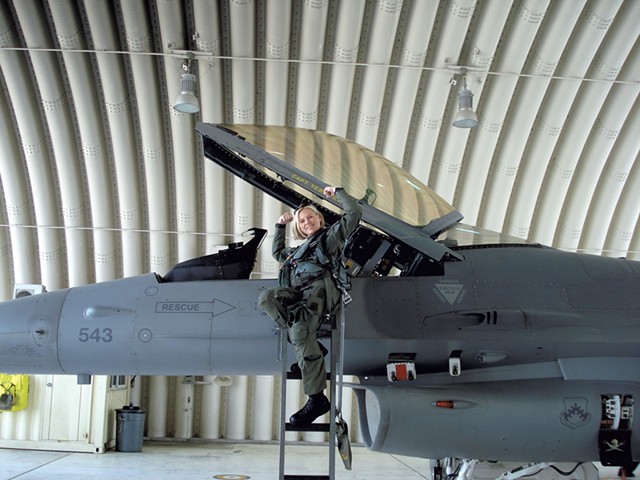

- courtesy of Terry Sherry
- Major Sherry with her F-16 in South Korea, demonstrating a common greeting among fighter pilots
Surprised that an older, experienced pilot would make such a bad decision, Sherry found herself calling the shots.
"It was a very intense situation," she said. "He was not comfortable with handling the emergency, so I felt like I had to fly his plane for him. Plus, he was an older gentleman who had limited experience, if any, flying with a female pilot — and a younger one at that."
Sherry had some of her most satisfying aviation experiences when she wasn't in the plane she was flying. For five years, she remotely piloted the MQ-9 Reaper and MQ-1 Predator in support missions for troops in Afghanistan, spotting improvised explosive devices and enemy combatants. For a time, she did so while pregnant, sitting in a chair in Las Vegas.
Most days, Sherry stared at empty roads on her monitor, she said. But "there were a handful of times when I came out of there so thankful to be doing what I was doing, being in the right spot at the right time," she went on. "A lot of mothers and fathers came home because I was there. That was a really rewarding feeling."
The original print version of this article was headlined "Flying Female"
Related Stories
Got something to say?
Send a letter to the editor
and we'll publish your feedback in print!
Tags: Culture, Aviation, Shirley Chevalier, Hope Riehle, Jennifer Davis, Beth Schiller, Jennifer Hoy, Kathy "Rocky" Daily, Maj. Terri "Glade" Sherry
More By This Author
About The Author
Ken Picard
Bio:
Ken Picard has been a Seven Days staff writer since 2002. He has won numerous awards for his work, including the Vermont Press Association's 2005 Mavis Doyle award, a general excellence prize for reporters.
Ken Picard has been a Seven Days staff writer since 2002. He has won numerous awards for his work, including the Vermont Press Association's 2005 Mavis Doyle award, a general excellence prize for reporters.
About the Artist

Matthew Thorsen
Bio:
Matthew Thorsen was a photographer for Seven Days 1995-2018. Read all about his life and work here.
Matthew Thorsen was a photographer for Seven Days 1995-2018. Read all about his life and work here.
Speaking of...
-

A Franklin County Nonprofit Is Drawing Young Women Into Aviation Careers
Feb 21, 2024 -

Weinberger Picks Longo for Burlington Aviation Director
Sep 14, 2022 -

Loaded With Cash and Poised to Expand, Beta Technologies Sees Clear Skies Ahead
Apr 26, 2022 -

Skier, Pilot and Shooting Survivor Manon Belzile Is the 'Motor Ninja' at Beta Technologies
Oct 20, 2021 -

WTF: Who’s Been Flying Aerial Stunts Over Southern Chittenden County?
Aug 4, 2021 - More »
Comments
Comments are closed.
From 2014-2020, Seven Days allowed readers to comment on all stories posted on our website. While we've appreciated the suggestions and insights, right now Seven Days is prioritizing our core mission — producing high-quality, responsible local journalism — over moderating online debates between readers.
To criticize, correct or praise our reporting, please send us a letter to the editor or send us a tip. We’ll check it out and report the results.
Online comments may return when we have better tech tools for managing them. Thanks for reading.
- 1. Video: Plainfield Recovers From Catastrophic Flood Stuck in Vermont
- 2. Vermont’s Olympic Rowers Head to Paris Outdoors & Recreation
- 3. Vermont's Singular Sculpture on the Highway Project Gets a Facelift Art Review
- 4. Vermont Comedy Club Chef Mo AlDoukhi Cracks Eggs and Jokes Grilling the Chef
- 5. The Magnificent 7: Must See, Must Do, July 24-30 Magnificent 7
- 6. Visiting Randolph, Vermont? What to See, Do and Eat on Your Trip Visiting Vemont
- 7. Newly Formed Montpelier Performing Arts Hub to Purchase Gary Library Performing Arts
- 1. Three to Six Hours in Newport, Vermont’s North Coast Culture
- 2. Burlington’s Semipro Soccer Team, Vermont Green FC, Is Winning On and Off the Field Outdoors & Recreation
- 3. Québec’s Powwow Season, a Summer Tradition, Kicks Off Québec Guide
- 4. Vermont’s Olympic Rowers Head to Paris Outdoors & Recreation
- 5. Theater Review: 'The Beauty Queen of Leenane,' Dorset Theatre Festival Theater
- 6. Vermont Playwright and Musician Stephen Goldberg Dies Performing Arts
- 7. State Architectural Historian Devin Colman Steps Down — and Into a New Role Architecture


























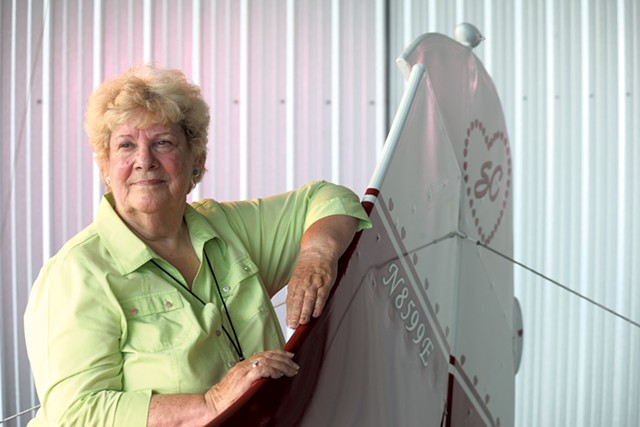
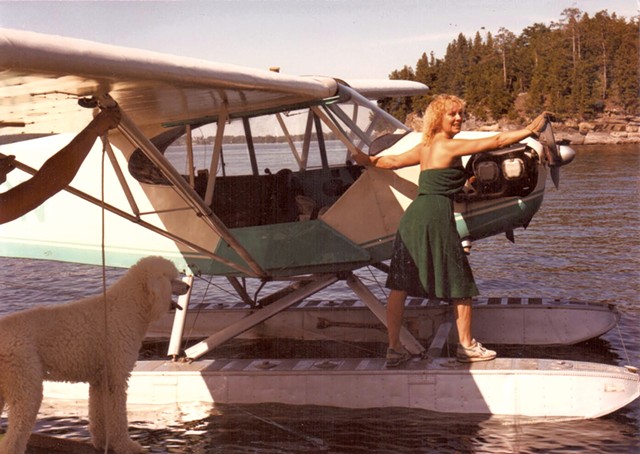
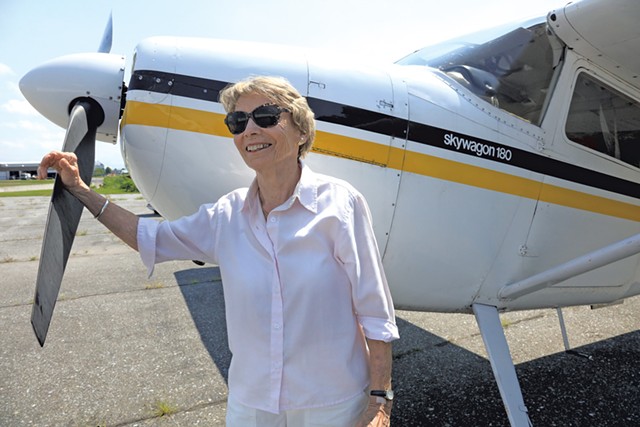
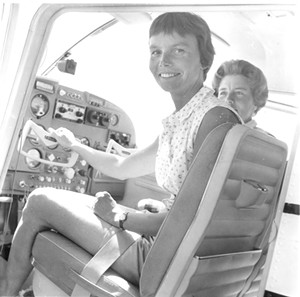
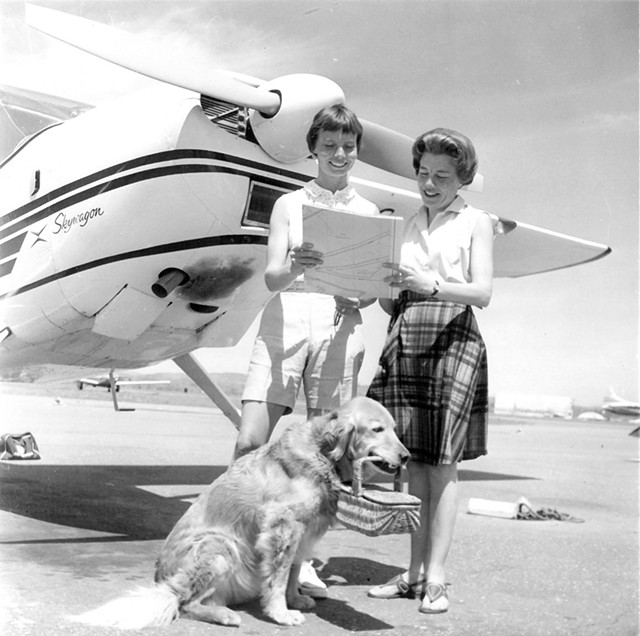
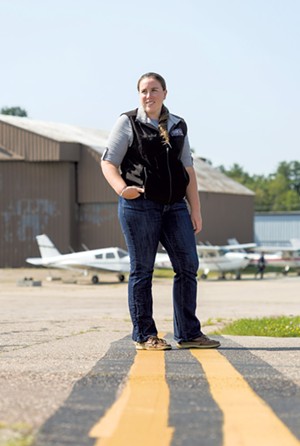
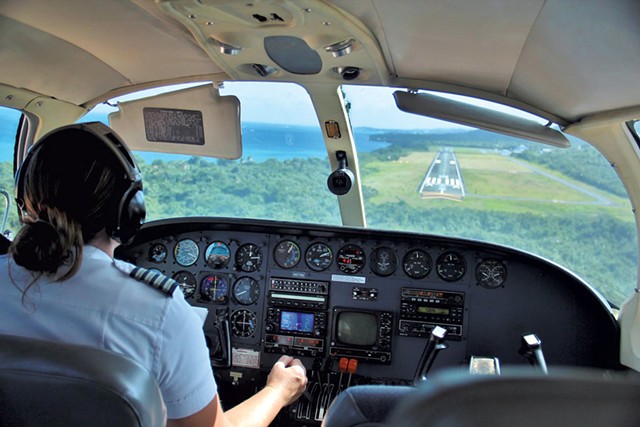
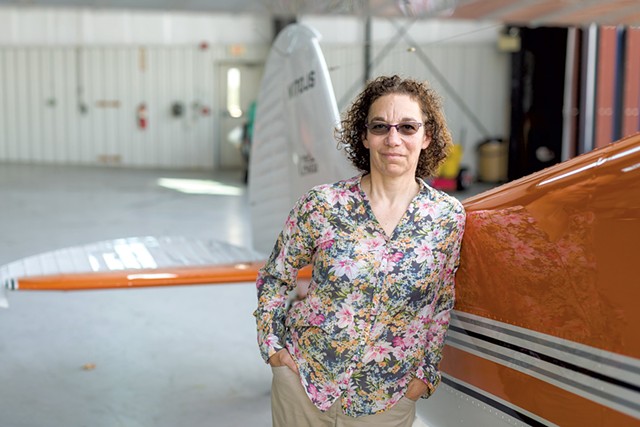
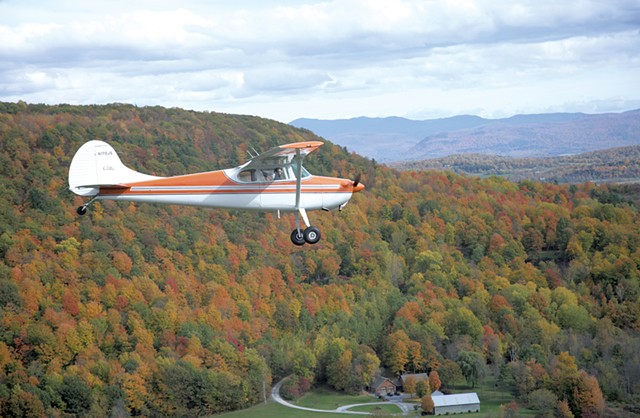
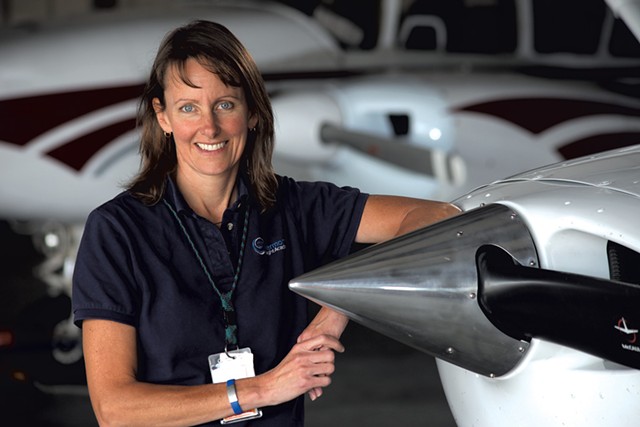
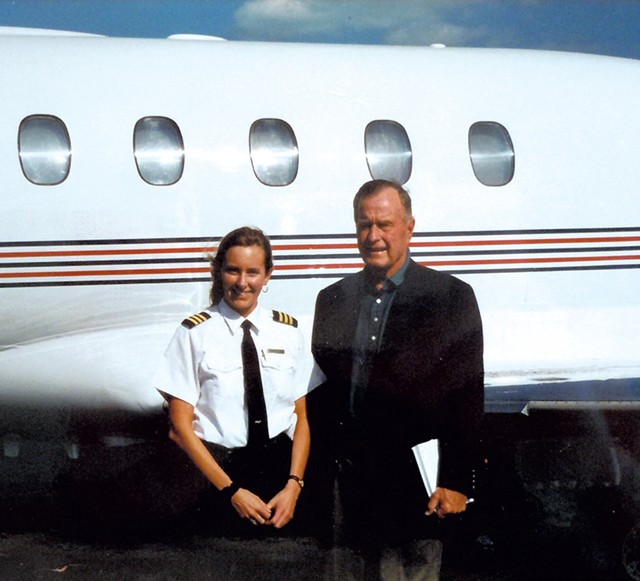
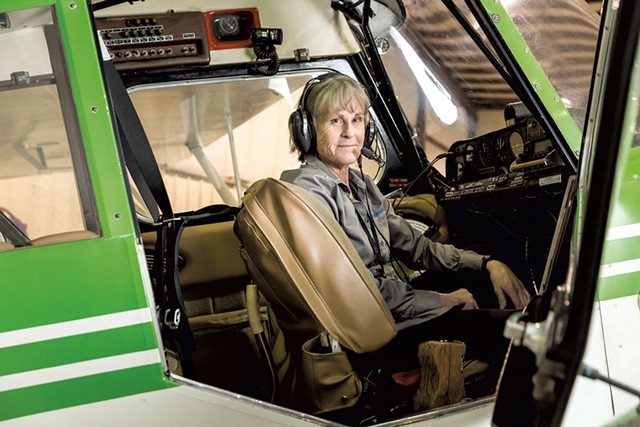
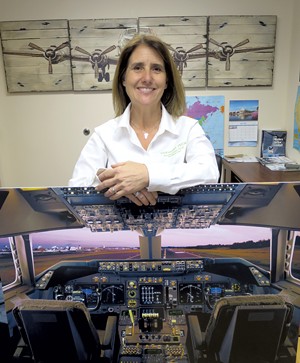
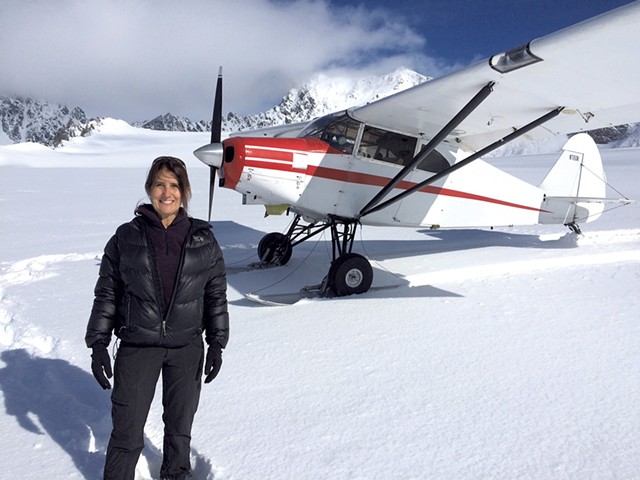
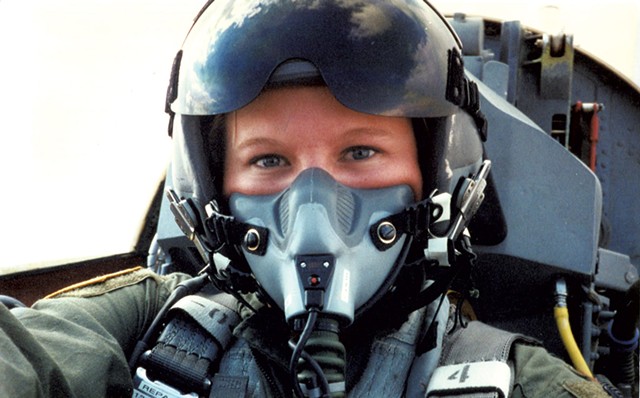
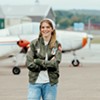
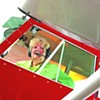


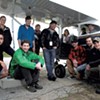
![Shirley & Champ [322]](https://media2.sevendaysvt.com/sevendaysvt/imager/shirley-and-champ-322/u/square/2291816/episode322.jpg)










